by Helen Titchen Beeth
November 2011
This post has been moved from its original location at PeerSpirit.com and archived here, so you can continue to access it.
Helen Titchen Beeth lives in Brussels (Belgium) with her two children. She works for the European Commission as a web editor and collaboration pioneer. On their recent teaching trip to Belgium, Ann and Christina enjoyed the gracious hospitality of Helen and her family. Thank you, Helen for sharing this story with us.
I recently decided to use circle in a troubled space, and circle held us beautifully. Seven of us met for a half day with the intention of simply getting unstuck and back on track.
At the beginning, two of the members weren't talking to each other. We were seven people, so I set up eight chairs with the extra chair representing the clients we serve. The intention was placed in the middle straight off, together with some flowers, and I introduced the circle agreements, the talking piece, and the guardian bell before we started.
We did a check-in round around "Why do I care about this project that we serve?" and "What positive outcome do I hope for today?" I got participants to reflect in silence for a bit and write their answers on cards, then we went round the circle twice, to hear their answers. The first tears were shed during the second round. And the first apologies came out. The bell sounded a few times.
Then, we did an exercise in witnessing and appreciation: "What do I count on you for?" Each person held the "listening shell," while everyone else around the circle spoke what they counted on the person for. It was a great way of getting the team’s capacities and strengths into the centre, so they could see what an amazing bunch of people they were — and what a gifted team. More tears flowed. The team itself decided to use the talking stone as well as the listening shell . . . They stuck with the talking piece throughout, even when I would have been inclined to let it go. They also quickly appreciated the utility of the guardian bell. This team learns fast!
Next came a round (not something I'd planned, but it needed to happen) where each person could speak their vision of the project into the centre. We all got to see how different people's visions were — and how each person's vision reflected their own strengths and their own perspective. They understood then that they could either reduce their shared vision to the lowest common denominator that they could all agree on, or expand it out to embrace the full diversity of their strengths and perspectives. They chose the latter path, a little wiser for having more clarity on how much they saw together.
In the closing round we did "What do I most love to contribute to our project, and what do I need from each of you to be able to bring my best contribution?" — a version of "offer what you can and ask for what you need." It came out really strongly that they all wanted to work together much more collaboratively and get out of the silos they had managed to get themselves into.
Afterward, the boss and I, plus the two who had previously not been speaking to each other, went to lunch together. There was an atmosphere of relief, bordering on euphoria for some.
Since that meeting, we have met twice more, each time for half a day, with two new team members to integrate. They really have learned circle: kept right on with the talking piece, and I used the bell to call them back to order when they got over-excited. We started off with a round on "What have we achieved so far?" (extremely impressive) and then a strategy session: “Where do we want to be in 2015?” With direction clear, we could focus on the practical source of most of their difficulties: lack of structure and clarity about who is responsible for what in a situation that is continually and rapidly becoming more complex. I have taught them some elements of Holacracy™ (sorting "tensions" into operational and governance issues, then distilling out roles and accountabilities from the governance tensions).
Holacracy™ is a glorious approach, because it is fundamentally democratic. Every role is self-governing, so people are gradually led into leadership on behalf of the role they energize. It takes time, but these guys are already really enthusiastic about how their experience so far has unblocked them and released their creativity. Now, they have the bit between their teeth to forge ahead on their own. I will be there to help them with my circle agreements, talking stone, and guardian bell if they run into trouble, and to facilitate their governance meetings until they can do it themselves.
